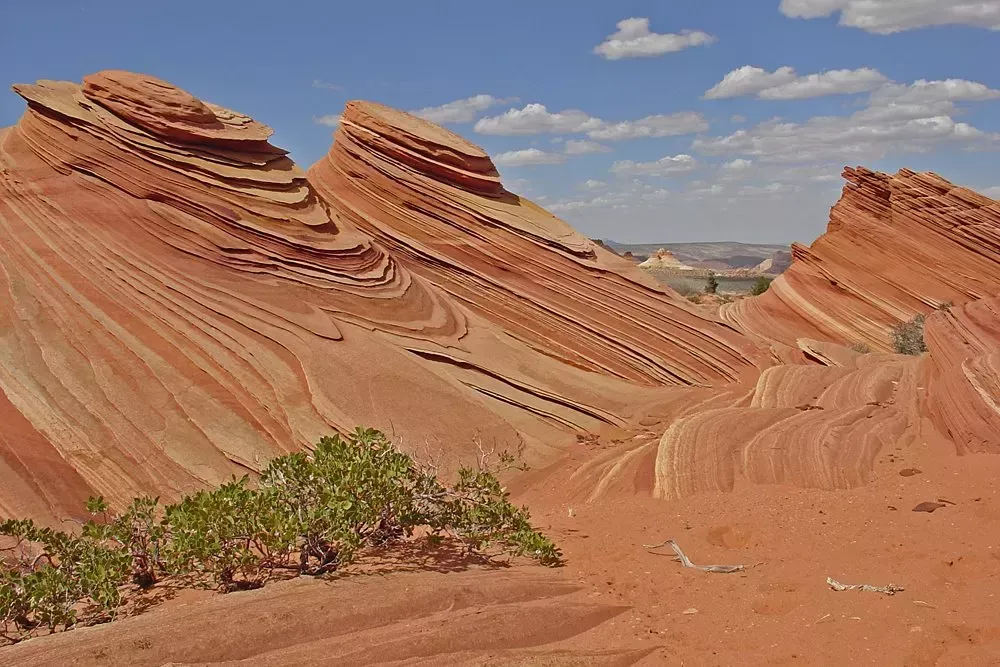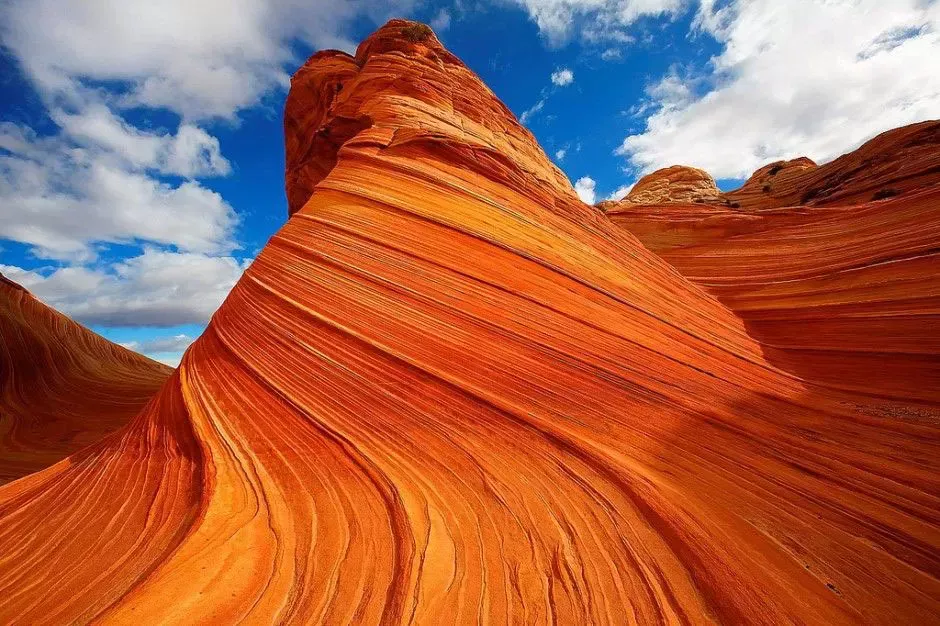Coyote Buttes National Park is located on the Utah-Arizona border on the Colorado Plateau. The space landscape of the park stretches between the world famous American landmarks - the Grand Canyon in the south and Bryce Canyon in the north. Millions of years of exposure to water and wind have spawned bizarre geological formations that look like mushrooms and waves in Coyote Buttes.
Scientists believe that the Coyote Buttes Hills arose 190 million years ago when the sand dunes were fossilized.
 |
| Coyote Buttes |
The most famous and breathtaking sight in Coyote Buttes was and still is The Wave - a sloping hill that really resembles a frozen wave.
The wave is a unique formation of compressed multi-colored sandstone in the form of a depression with ridges rising high up. The shape of the Wave involuntarily evokes an association with the waves that Moses moved apart when he led his people across the sea.
 |
| Coyote Buttes |
It is surprising that until the 90s of the last century, Coyote Buttes National Park was practically unknown outside the United States. Today, this uniquely beautiful landscape attracts numerous tourists from all over the world. To protect the hills from destruction, access to Coyote Buttes had to be severely restricted. No more than twenty people a day can enjoy the splendor of the hills.
 |
| Coyote Buttes |
Those who are interested in other canyons can familiarize themselves with the landscapes of Antelope Canyon, Zion and Darial Gorge in the Caucasus.
